Our second Industry interview is with Seth Curtis. Seth is a lifer. With skateboarding as a compass he has navigated the decades, and lived a life of rich experiences tied to his passion. This interview chronicles the different roles he has had over the years and delves into what they encompassed.
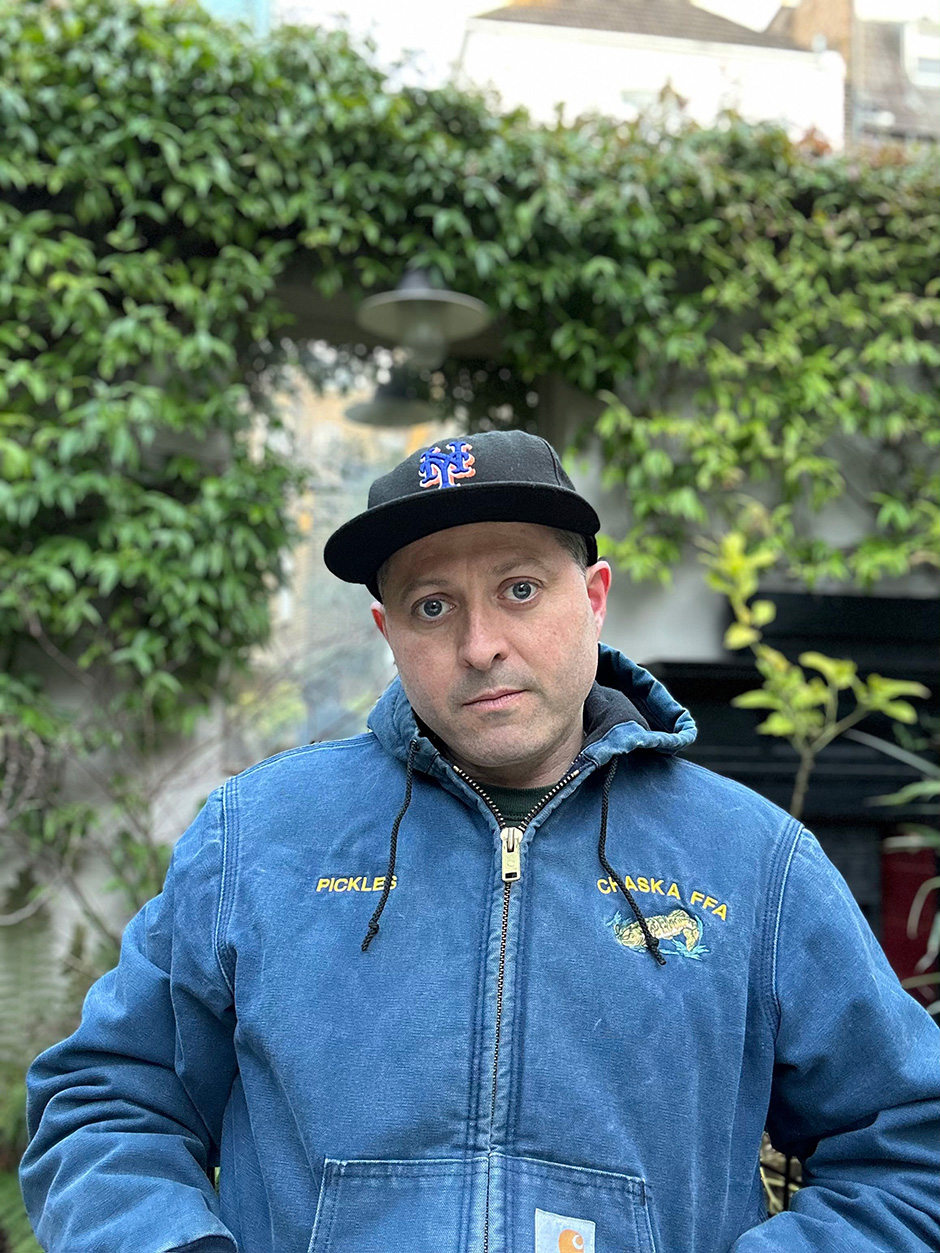
words and interview by Jacob Sawyer. Seth Curtis at home in London. PH: Riley Curtis
The origin of Seth’s story, like many other children of the 80s, begins with a BMX bike. Thanks to E.T the Extra-Terrestrial garages all over the UK had a BMX but for many it became an obsession. Seth would race bikes with his brother and do jumps, and they soon became readers of the UK publication BMX Action Bike. They were readers early enough that they got to watch skateboarding feature more and more heavily until their bimonthly bike magazine became RaD. Throw Back to the Future in the mix for the perfect storm and the Curtis brothers would both be mail ordering life-changing setups from Rollersnakes in no time. Santa Cruz graphics captured their imagination, and Seth and Joel received a Corey O’Brien, and a Jeff Kendall respectively.
When the 90s hit, Seth was the perfect age to absorb the evolution of streetskating, and absorb it he did. The skaters he was looking to, who were changing the landscape month after month, were the same age as him. Video Days was in the VCR and needless to say Guy Mariano’s part was on repeat. He is grateful for being the age he was when this was happening. He witnessed an incredible monthly change take place, watched the stuff he had idolised in the late 80s become passé overnight, and in turn felt part of a new skateboarding revolution. This period of time is when his passion grew exponentially, he was soaking up any information beamed across the Atlantic or homegrown. More than anyone I know, he has kept this up since then. That’s why you won’t find such a well-versed mind for trivia elsewhere. Seth’s deep knowledge makes him a ‘Phone-a-Friend’ for many, and a valuable asset for any employer.
Seth was travelling further afield to skate at an early age, often staying with his friend Benjie Bateman in Edinburgh. This led to him befriending the Bristo Square contingent, a connection that would lead to his inevitable first pilgrimage to San Francisco. After six weeks staying on Geary and Van Ness, and skating the city all day and night, Seth was sold. These trips to skateboarding’s Mecca were to become a yearly fixture. It was when, having returned from one of these mind-expanding Transatlantic escapades, that a job offer would become a stepping stone on his journey to London.
Sebastian Palmer who is now General Manager for New Balance Numeric, moved from Bewdley to Sheffield in the early 90s to go to University. In 1993 he started a skate shop there with Martin Lau, and Dave Bailey called SUMO, which would become an institution for over a decade. This interview begins with Seth’s first job in Sheffield working for Seb, and a timeline in skateboarding which evolved from that magical period of time.
I’m proud to call Seth a close friend, and thankful that I spent some of the best years of my life working with him. It was great to hear him recount his history in the industry. He has done, and seen some crazy stuff firsthand. From capturing NBD’s in Paris to judging Vans Downtown Showdowns with John Cardiel, it’s all in here…
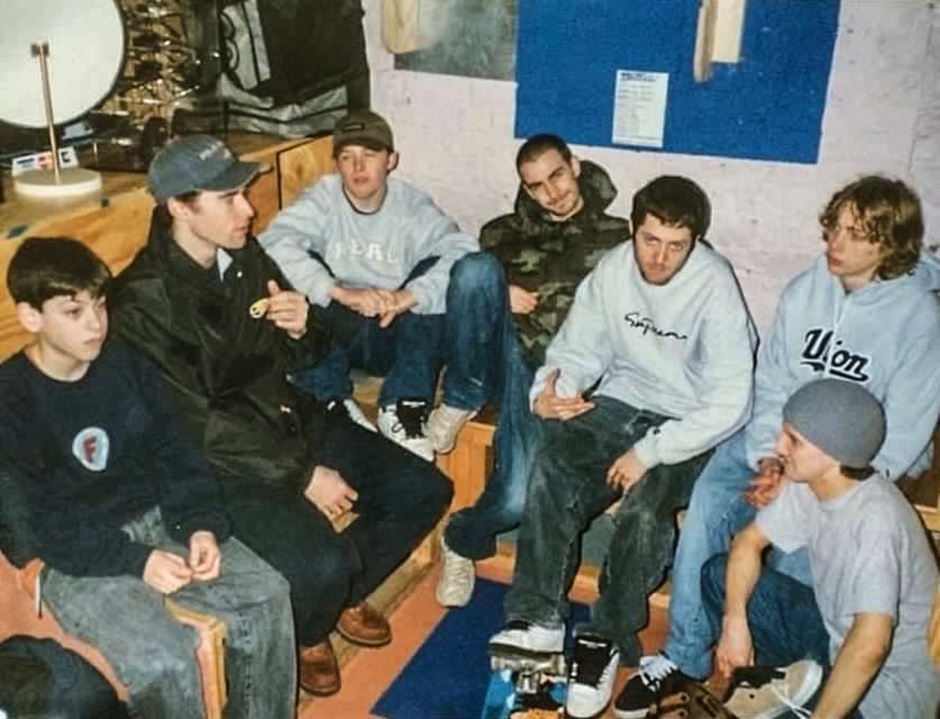
Sumo Skate Shop, Seth’s original clubhouse. From Left to right: Louis Slater, Matt Beach, Henry Clay, Aston Thomas, Seth Curtis, Mark Baines, Joel Curtis. Below left: Sumo Ad featuring Seth’s ‘SMO’ which tallies with his time working there
Let’s start this interview with Sumo. You quit college, and went straight into working there?
At this point, I was going to SF every year. I had just been to California and was planning to return. This was probably the second year of Sumo being around. It was great, I was more obsessed with skateboarding than ever.
So working there and being surrounded by skateboarding every day was just right.
Yeah definitely, i found it hard to commit 100% of my head space to my college course in a way, because my parents were both painters. The teachers knew who my parents were and how accomplished they had become. I was just so into skating that I didn’t think about anything else. I was still handing in all my coursework though.
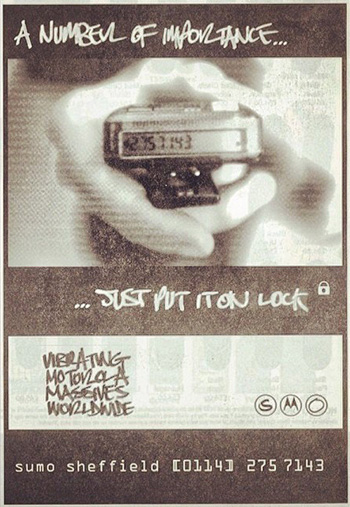 When it came to the point that Seb asked me if I wanted to come and work at the shop I jumped at the chance. The shop was very small and very quiet although it went on to become a bigger entity, a serious force in skateboard retail in the North. But in my era it was tiny, ten boards on the wall, and a few T-Shirts and stuff. The skateboard industry at that point in time was pretty tiny anyway, the shop reflected that I suppose.
When it came to the point that Seb asked me if I wanted to come and work at the shop I jumped at the chance. The shop was very small and very quiet although it went on to become a bigger entity, a serious force in skateboard retail in the North. But in my era it was tiny, ten boards on the wall, and a few T-Shirts and stuff. The skateboard industry at that point in time was pretty tiny anyway, the shop reflected that I suppose.
How did a year working at Sumo segue into moving to London?
Basically Seb {Palmer] had spoken to Sharon [Tomlin] and knew she was looking for new employees to work at Slam. At that point in time all of the key shops used to talk. Seb would have also been buying stuff from Slam distribution. So there was this job going in London. I had never even thought about moving to London, it wasn’t really on my radar. Seb told me that I should go down and interview for the job and encouraged me to go for it.
So I went down to London for the day, got the train down and went straight to the Covent Garden shop in Neal’s Yard. I met with Paul [Sunman] and we had a quick chat. Then he basically asked me when I could start. I had planned to go back to SF again at that point for a month. I told him my plans and he said I could start when I got back. I went back to Sheffield and almost straight away I flew to America. This time I went with some of the Sheffield and Worksop lads: Smiggy, Ches, Blank. Hirsty, and Rob. So I skated San Francisco for a month, came back to Sheffield and then moved in with my friend Jess in London. He had a room to rent in Stockwell near the skatepark. It was a super cheap council flat sub-let. I moved down to London with my skateboard, a Thrasher bag full of some clothes and shoes, a sleeping bag, and a blanket. I had a tiny room in Stockwell and just started working at Slam.
So this is 1996, Sharon was managing the shop, who else were you working with?
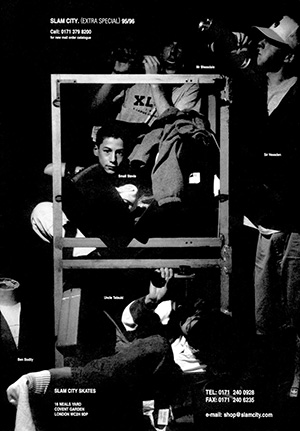 Sharon and Andy Hartwell, they were the full-time members of staff. There was a guy there called Nick who I was taking over from. Ben Sansbury worked in the shop on Saturdays, he was my first real friend in London. I didn’t know anyone here at all. Ben was the first person I connected with, found really funny, and hung out with outside work. There were so many parties going on in London at that time and he would have the guest list sewn up for all of them. I’d go to parties with him loads when I first moved here. I met Will Bankhead at the exact same time and he was always super cool to me too. I spent loads of time with those two. I also worked with Teru Tatsuki who went on to work at Supreme.
Sharon and Andy Hartwell, they were the full-time members of staff. There was a guy there called Nick who I was taking over from. Ben Sansbury worked in the shop on Saturdays, he was my first real friend in London. I didn’t know anyone here at all. Ben was the first person I connected with, found really funny, and hung out with outside work. There were so many parties going on in London at that time and he would have the guest list sewn up for all of them. I’d go to parties with him loads when I first moved here. I met Will Bankhead at the exact same time and he was always super cool to me too. I spent loads of time with those two. I also worked with Teru Tatsuki who went on to work at Supreme.
What did your job consist of at that point?
There was no definition as far as a role then, just selling stuff to anyone who came in the shop. London was going through this stage where skateboarding was really cool. i-D Magazine and The Face were really picking up on skateboarding, the graphics on T-Shirts, and the shoes. It was this big thing again. This meant the shop became a hot spot and lots of people were coming in who didn’t skate to buy the stuff.
You moved there at a prime DC Shoes era too.
Yeah, that was just beginning. It started really happening in early 1997. We were killing it with that stuff, it became like a DC shop at one point. Slam had it’s own brands too but the stuff we were distributing would become really popular slightly later. So we were selling shit loads of DC shoes to people who didn’t skate, PR people, and graphic designers.
Got them D & G shoes mate?
D & G shoes, exactly. The best was when that customer came in and pronounced DC Shoe Co USA as one word “Dukshoecusa”. It took a while to figure out what he was after. Then the busy period after that was because of the popularity of brands Slam was distributing. The shop really pushed those brands. Toy Machine, and Zoo York for instance. As times changed I became the manager of the shop for a bit. I just really wanted to focus on it being a hardcore skate shop, I wanted it to be like FTC, Sub Zero, or Supreme.
I remember going to Southbank at that time and seeing Clive [Daley] down there. He introduced himself and asked where I was from, and what I was doing in London. I told him, and said I was working at Slam. He was shocked when I told him. He said ‘you work at Slam? But you skate!” His perception of the shop, being a Southbank local, was that Slam wasn’t really a skate shop anymore, that it had become a clothing shop. That really stuck with me and it became a bit of a mission for me to put Slam back on the map as a legit skate shop.
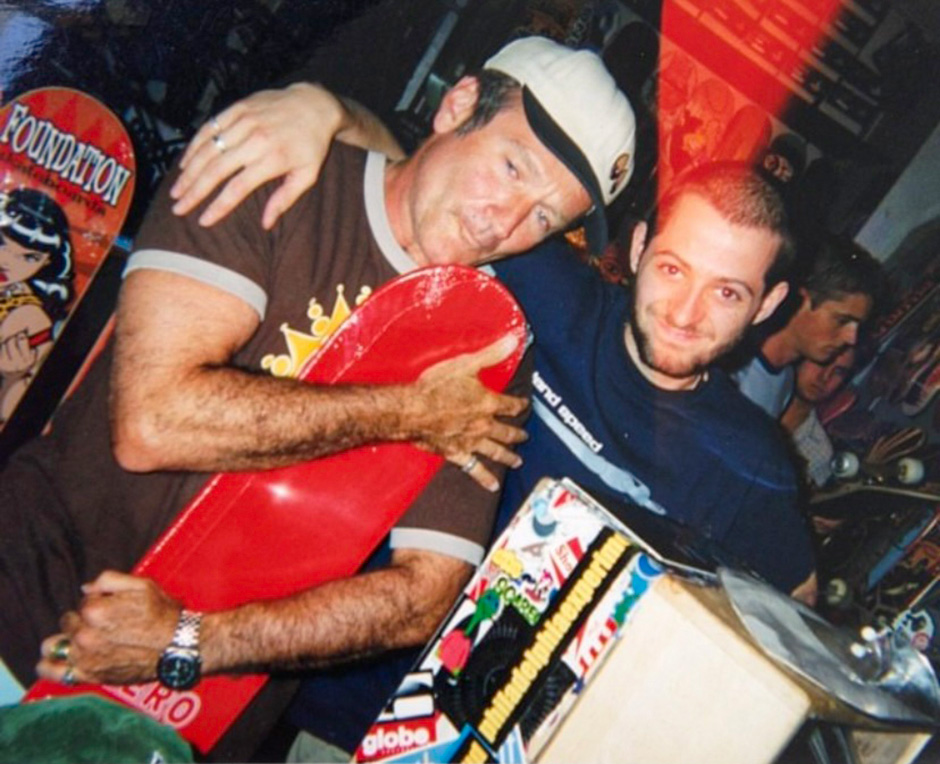
Seth Curtis and regular Neal’s yard celebrity visitor Robin Williams in 1998. Above right: Slam advert from the era seth joined the staff in Covent Garden
You had to steer things a bit.
When I was managing the shop and interviewing, I just wanted people who were bang into skating. I wanted people who could skate for the shop. I wanted to have a shop team again full of people who were ripping. Previously I think the team was just people who were from London, I ended up making calls to put on people who weren’t from London. People like Nik Taylor, or Channon King. We wanted the team to reflect the people who came in the shop.
I think that perception of what the shop represented was tarnished by repeatedly appearing in the credits of I-D Magazine and The Face as a clothing source.
Yeah, there would be stylists in the shop every single week asking what T-shirts were cool. So we would give them a Holmes T-Shirt for instance. Holmes was in it’s infancy then but would later grow before Sophie and Russel split to launch Silas. Another amazing brand we would go on to sell loads of.
What did you gain from those initial years?
I was happy to be involved in skating, I was skateboarding every day at that point. I loved being around it and talking about it twenty-four-seven. I loved the social element of it, I met so many people from different cities, and different countries. I met loads of people I am still friends with today from working in there. Having the record shop downstairs was huge too, all of the music knowledge and influences I gained from working above Rough Trade was invaluable. Loads of American dudes would pass through the shop, come skating with me, I would visit them in the states. I forged so many friendships in that starting period.
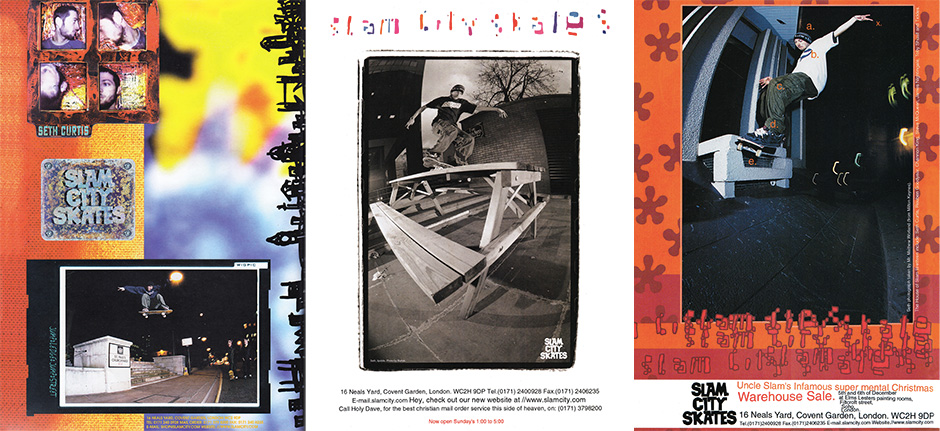
Two ads from 1998 shot by Wig Worland sandwich one from 1999 shot by Oliver Barton. Slam ads at this time were the result of Nik Taylor working his magic with QuarkXPress
What are you happiest about achieving at that point in time?
I got Nik Taylor on board and he was a graphic designer. I thought it was really important that we should have ads in Sidewalk which had become like the new RaD magazine. The mag was really popular and people were focusing on what was going on in the UK skate scene, that was the lens. That mag was getting better and better and I wanted us to advertise so I worked closely with Nik on getting the ads together, getting photos of the team riders for ads. Sometimes we would do double-page ads where there was product related to the skater. It was great working on that.
“I was happy to be involved in skating, I was skateboarding every day at that point. I loved being around it and talking about it twenty-four-seven”
This also coincides with you being a sponsored skateboarder.
I suppose so yeah. Fos was giving me Toy Machine boards from the warehouse which is by no means a serious sponsorship but I was flowed boards. I was so into that brand. I lived with Leo Fitzpatrick who was friends with Bam Margera, and he came to stay at our house with Kerry Getz, and Mike Maldonado for quite some time. They stayed at my house for about 3 months and I got super into skating with them and their whole vibe of skating. They had an East Coast meets West Coast sensibility. I was really into repping that brand because I was friends with them and liked their influence on what I thought was cool in skateboarding. I was also getting clothes from Volcom and shoes from Adio for a bit.
This is when you first got any coverage.
Yeah this is when I started getting photos in Sidewalk. It was weird, I never thought I was good enough to get any of that stuff. Then I got the cover of Sidewalk one month, it was bizarre how that ended up happening.
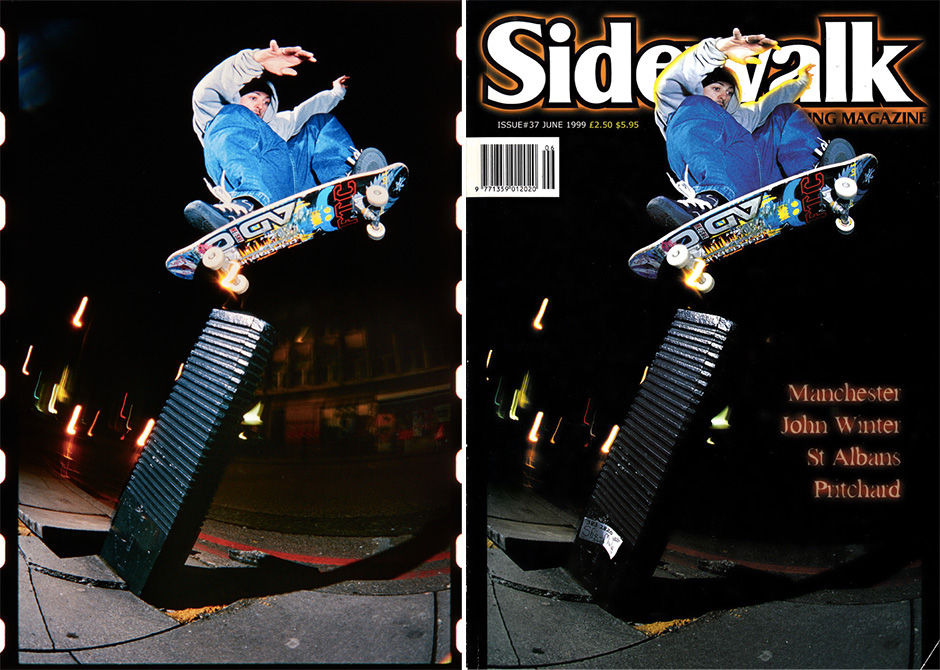
Seth Curtis on the cover of the June 1999 issue of Sidewalk and the original Wig Worland Scan
The move to London brought about exciting changes.
It was incredible, it was so good. It had some challenges but working at Slam was amazing, it was such a cultural melting pot. The people we met and got to chat to, skateboarding aside, was nuts. We were exposed to so much art, culture, and music. We got to go to gigs for free, parties, art shows. We were exposed to so much stuff on a weekly basis and it was all to do with that shop.
Any good anecdotes?
I could go on for weeks about it. We had so many funny people working there, and coming in. It was consistently hilarious. I think before I worked there it got pigeonholed as having a bad vibe and being too cool for school. Looking back it could have been intimidating walking in there, it was a bit anarchic. It was our clubhouse and skaters used to love it.
It’s interesting to think back on how much time we would spend answering the phone. It was constantly ringing. Some good Sidewalk Tapes inspired nonsense went down.
I remember prank calling downstairs all the time. Sam Griffin would prank call Neil McKay so often. He’d pretend to be a guy from Barnsley who had just released a limited 12” of his trumpet music or something like that. He’d explain it to the point that Neil would ask him to bring it in for them to check out. He would fall for it every time before Sam said it was him. It’s true what you said though that phone never stopped ringing.
People calling up for roller skates.
People thinking we sold ice skates too. I remember at my flat at the time we had the same phone with the same ringtone. I would answer that landline “Hello, Slam” without even thinking about it. You, or whoever would phone me to go skating and I’d be in default work mode.
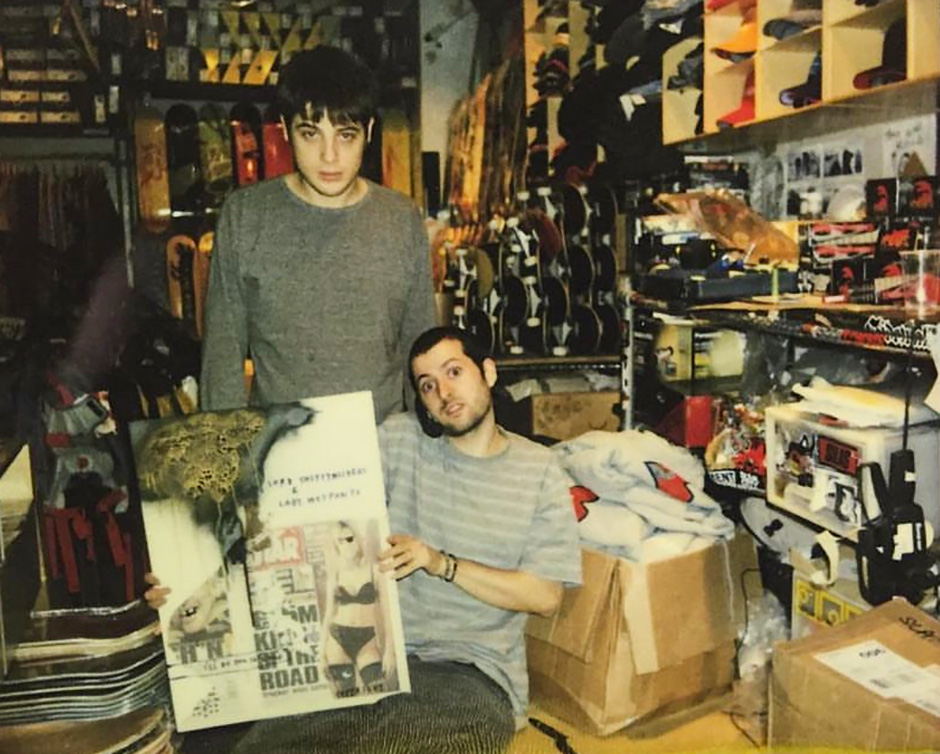
Seth Curtis and Chris Massey (RIP) with a Marc Johnson painting for the Side Effects Of Urethane show in 2001. Slam landline phone attached to Seth’s ear. PH: Jacob Sawyer
You were part of the business evolving and adapting.
We saw the warehouse get good too and there was a good squad there. With Fos, [Chris] Massey, Ben Bodilly, Duncan, Dan ‘Jagger’ Ball, Blind Ollie Soft Rock [Oliver Payne], Tim Fowler, and those guys. There was some quality banter between the shop and the warehouse.
Your time spanned some very different eras.
I did the Sharon and Andy bit which was really cool. There was the time where I was doing it by myself and bringing people in. Then [Chris] Pulman came in. The time where I was there the longest would have been myself, you, and Pulman. It was super fun, we were having a riot in there every day. Working in a shop comes with some frustrations, but it can be hilarious at the same time.
You started a clothing company too.
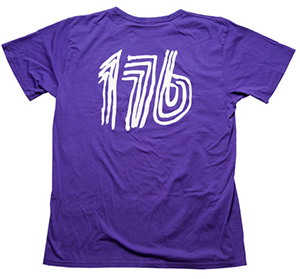 Yeah I did a clothing company through Slam called 176. I mainly worked with Fos on that. I got some people I respected and got on with to collaborate. I made some T-Shirts involving their artwork. I made shirts featuring work from Jason Dill, Bam [Margera], Vaughan [Baker], [Mark] Baines, Luke Davidson, and some other people. It received interest from Japan. There were people there who were obsessed with things from London and especially things from Slam. I ended up selling a lot of 176 T-Shirts to Beams in Japan and went on to make more shirts for them featuring my graphics and artwork. Fos helped me with putting everything together.
Yeah I did a clothing company through Slam called 176. I mainly worked with Fos on that. I got some people I respected and got on with to collaborate. I made some T-Shirts involving their artwork. I made shirts featuring work from Jason Dill, Bam [Margera], Vaughan [Baker], [Mark] Baines, Luke Davidson, and some other people. It received interest from Japan. There were people there who were obsessed with things from London and especially things from Slam. I ended up selling a lot of 176 T-Shirts to Beams in Japan and went on to make more shirts for them featuring my graphics and artwork. Fos helped me with putting everything together.
I regret not knuckling down at that point. I should have developed my computer skills more, and run with that relationship with Beams. This was a point in time where everyone had a T-Shirt company though, we had lots of T-Shirt brands in the shop from so many people, and I just got a bit sick of it. I felt like I was part of this trend and didn’t have the conviction to carry on. Everyone was making T-Shirts, famously Banksy came in trying to sell us T-Shirts and I turned him down, hahaha.
I didn’t know that one. I remember him coming to sell books to Rough Trade.
Yeah he introduced himself and showed me the shirts with stencils on. We already stocked some shirts made by other graffiti writers and there was no room for another brand. I told him we couldn’t stock it, he said “fair enough”, looked a bit annoyed, and was off.
What do you think you learned from your time at Slam which helped with the next chapter?
I think building relationships and getting to know people. Having a big contact base. I always prided myself on trying to be personable, trying to keep up with people, and keeping in touch with them. I’d keep in contact with people and keep things going, whether it was helping out with writing magazine articles, visiting friends in the US or Soy [Panday] in Paris for instance. The main takeaway would be the friendships and connections I made from working there.

Seth Curtis with a narrow no-comply to tail in Paris. PH: Max Creasy. Wallie 5-0 at Southbank just before starting at New deal. PH: Andy Simmons
How did the move from Slam to working for New Deal UK come about?
I was in my late twenties and felt like I couldn’t stay in the shop forever. It felt like I was treading water and I was ready for a change. Then this guy called Eric Conyers who used to work for CCS came over to work for New Deal UK. New Deal was the UK’s biggest skateboarding distributor of US brands at that time. He called me and said he wanted to meet up and discuss something. He wanted me to work alongside him on Skate Marketing for the brands they were carrying. He said he knew I had a lot of connections from the time at Slam and thought I would do a good job of it.
I was blown away. Initially I was a little unsure of my ability to do any of that stuff. I told him I was fairly neanderthal when it came to Spreadsheets and beyond but he said none of that mattered. He wanted me to come and work with them. He told me the salary and I started to consider it. New Deal were the direct competition to Slam distribution at this point and I felt allegiance to Slam, I fucking still do. But this opportunity was one Slam couldn’t give me, and one I couldn’t turn down. So I went to work for them as Skate Marketing Manager.
That was a multifaceted role. What did it look like on a daily basis?
My role was to try and revitalise the sales of US brands in the UK. At that time UK brands were ruling the roost. Blueprint were absolutely killing it, every kid was riding a Blueprint board, or an Organic board, or a Death board. The sales for REAL, Spitfire, Alien Workshop, and other big US brands were in the water. My job was to revitalise some of the interest in these brands. This is before the internet was such a big force. The tools you could really use were magazines, and video.
I used the advertising budget we had to work with Sidewalk magazine, and later Document magazine as well. So I would use that budget and bring US riders over to the UK to create interest in the brand they rode for. We did a Zoo York trip with Donny Barley and Kenny Hughes for instance. That meant I delivered an article in the magazine of them skating in the UK, there would be a giveaway of some product somewhere else in the magazine, then a double-page ad in the same issue of one of them skating, and a review of their latest products. Any kid looking at the mag would see that brand as a dominant theme throughout.
“having my opinion valued was a really big thing for me. Sitting at a big meeting table in an office, someone listening to what you had to say, and respecting it”
I did that quite successfully, I’m not sure how it translated into sales but bringing those riders over worked really well. I mined a lot of my contacts to do that job. I brought people like Donny Barley, or Kerry Getz over here, people I had personal relationships with already. I knew they would come to the UK if I asked them. I went to ASR trade shows with Matt Anderson, Alex Cock, Eric [Conyers], and Steve Douglas too. It was really good, my opinion was sought and respected. That was what was nice really, having my opinion valued was a really big thing for me. Sitting at a big meeting table in an office, someone listening to what you had to say, and respecting it.
So you felt effective and could see the results of your hard work.
I’ll never forget going into a really big meeting. Steve Douglas introduced the meeting by saying it was all about communication. He said he wanted to start by talking about the person in the business who is the best at communicating. I was expecting him to talk about one of the owners or someone with a bigger role but he said it was me. He said I was the best at communicating. I was telling the story of what our business was about to the American brands the best. I’ll never forget that compliment Steve gave me, that’s a big compliment coming from him. It was a good job, I worked 5 days a week but still got to skate a lot, and be involved in it. I’d speak to Jim Thiebaud at DLX, the people at Alien Workshop, Joe Castrucci at Habitat. What I was doing was exciting, I was travelling a lot, and connecting with great people.
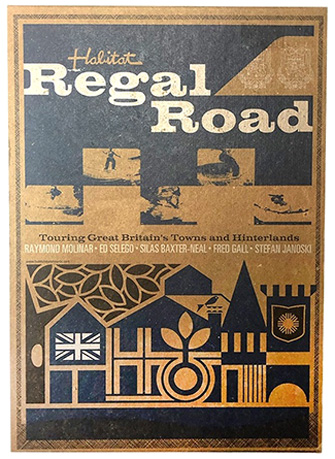 What was a highlight of your time working there?
What was a highlight of your time working there?
Working with Joe Castrucci was amazing. We did a UK tour with him and that became the Habitat Regal Road video. That came out with the Josh Kalis in Mono part attached to it. Working with Joe on that was great, and also introducing a UK rider into that tour. We had put Will Ainley on Habitat so to see him along for that ride, integrating and getting on with the team felt good. We also shot an article for Transworld surrounding that trip. Another highlight was a full Girl and Chacolate tour called Hittin Britain. My friendships with Sam Smyth, Ben Colen, and Aaron Meza helped there. We got to watch [Anthony] Pappalardo kill it. Through trips like that I got the feel for creating something and being involved. I liked helping people too, sending team riders product. New Deal supported a huge UK team. Another highlight was working with Neil Urwin, love you Neil!
Your time there was consistently productive.
I liked watching things come to fruition especially in those days where magazines were vital. I would get the new Document and the person on the cover would be a rider I was sponsoring, or someone I had flown in from the states and picked up at the airport. I could flick through and see where I had picked the pagination for different ads we were running. There would be an article about one of our brands and at the close would be an advert in the spot I had selected. That was exciting, you were seeing something three dimensional you had a hand in.
Working closely with the mags meant you wrote a few articles too.
Yeah I ended up writing quite a lot of the tour articles actually, I ended up doing that in my next job as well. There was no-one on hand to write them so I ended up doing it.
So that learning curve made you realise you could do the many things you weren’t sure of at first.
Sure, I was getting a bit older too. There was definitely a point in my mid-twenties where I realised I wasn’t cut out to be a sponsored skater. I had some photos in magazines but I didn’t have the skill of my brother to go on to be a properly sponsored skater. It quickly became apparent that wasn’t going to happen. When I was getting stuff for free I was obsessed with the idea of being good and convinced I was shit. I would worry about people thinking I was because I couldn’t do switch heelflips or something. As I got older I became more happy with how I skated. I was still getting photos in magazines just by being around. I had the cover of Document during that time. My time at New Deal culminated in me realising I was better off not being one of the skaters but being one of the facilitators instead.
“My time at New Deal culminated in me realising I was better off not being one of the skaters but being one of the facilitators instead”

Seth Curtis on the cover of the November 2005 issue of Document Magazine. PH: Sam Ashley
I remember when Slam were distributing Unabomber I went in the van with them to Norwich because they were doing a demo. I was still getting free shoes and boards at that point. I tagged along with them to go and skate at this park. There were hundreds of kids there, it was like they were the Bones Brigade or something. This was when Vaughan [Baker] was on Unabomber, and Frank [Stephens], and [Mark] Channer. They were just going to work in there, killing it. Vaughan was doing kickflip indy’s on the quarter pipe, Frank was smith grinding big rails.
I was just skating, I wasn’t in the demo or anything. I was trying to do a 5-0 to tail slide on this ledge thing and just couldn’t do it. This kid came over to me and asked for my autograph. I told him I wasn’t part of the demo, just a dude who was there. He said he knew I was lying, and to give him my autograph. I told him I wasn’t sponsored, just skating with my friends. He was looking at me like I was an arsehole for not signing his board. It just made me think, I’m in no way deserving to even be in the same room as these guys who are doing this demo. I knew I wasn’t going to take that aspect of skating any further. Later on in life around the time that Document cover came out, I was just happier with my skating. I didn’t have to worry about being a sponsored guy, I could just skate and that was fine. I have continued with that mindset with my skating. I’m happy with what I can do rather than trying to believe I am something else.
I always thought you were good at arriving somewhere and just getting stuck in, skating well off the bat.
That’s good to hear. I think skating with Bam [Margera], Mike [Maldonado], and Kerry [Getz] had a real impact on me. I went to Northampton with them and they were just snaking people. Some people would take offence at it. I remember Kerry turning to me and saying “I don’t give a fuck dude, I’m here to skate”. I always thought that was sick and kind of rolled with that a little bit. Whenever we went somewhere I wasn’t going to sit down, I was just going to skate because that’s what I came to do, whether people think I suck or not. I think that has worn off massively over the years though, I get well intimidated when I go places now.
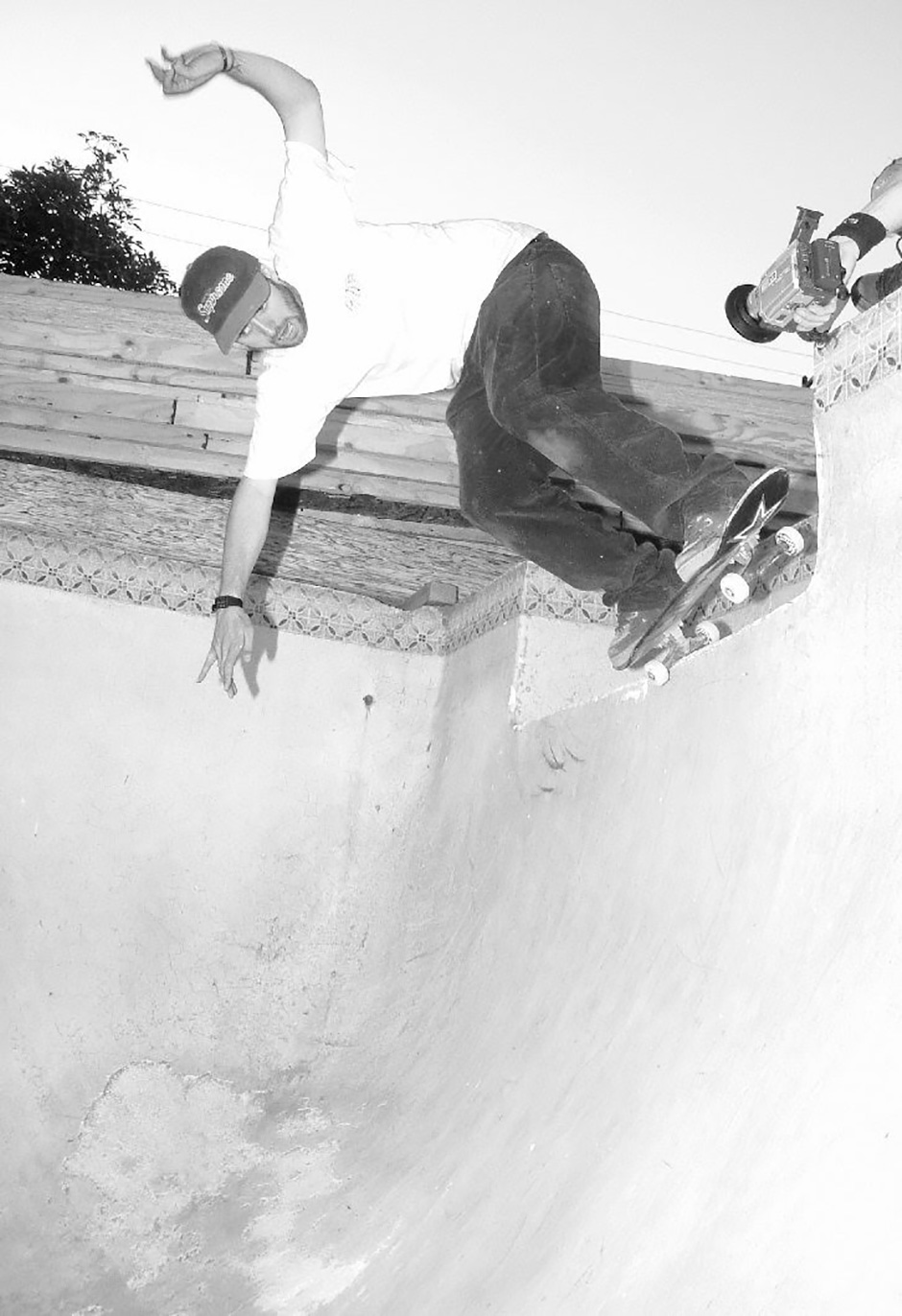
Unintimidated by uncovering a backyard LA pool, Seth pivots on the loveseat. PH: Jay Doherty
So that stint at New Deal was closely followed by a move to Black Box Distribution. Was there time between?
Yeah there was an interlude. New Deal went out of business. I was in California staying at Steve Douglas’ house and he got a phone call from Ray and Gary telling him the business had gone under. I was in California to go to a trade show with Matt [Anderson] and Alex [Cock]. We were all shocked wondering what to do now we were all out of a job.
Not a bad place to be to start job hunting.
Yeah they quickly found their feet. Matt had his relationship with the Girl camp and Alex had his relationships with Dwindle and Giant. Those two camps were key to them furthering their careers. I came back to the UK wondering what to do next though. They were both reassuring and told me one of the brands would be sure to contact me. I came home and started to work part-time at the Duffer of St George shop round the corner from Slam. It was nothing to do with skateboarding, a fashion store. I was working with Ash Ashbridge, Neal Bridson, and Neil Baron, and they loved going out and getting pissed after work which was always fun. I was still skating a lot.
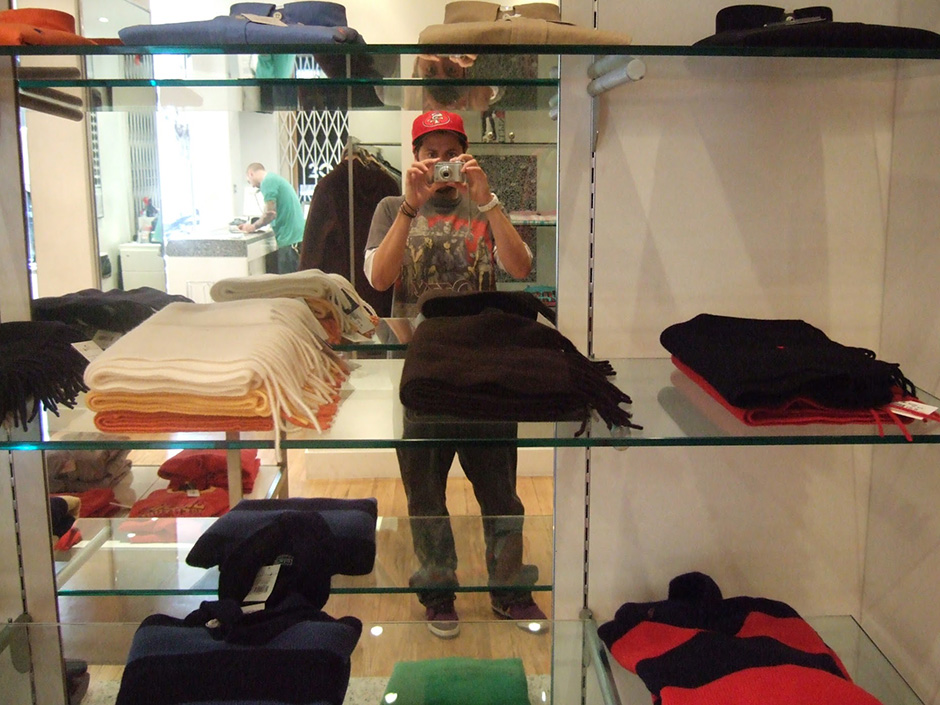
Evidence of a short stint at duffer of st. George. Another covent garden retail institution
Then one day the phone rang and it was Jamie Thomas who I had met and talked to when I was at New Deal. I had met him briefly through Slam when he was in town on Circa business too, but worked with him properly when New Deal were doing stuff with Zero. He asked me to go and work for him as European Team Manager for Zero and Fallen. He said he knew that the brands weren’t my cup of tea but knew I had good connections. He saw everything I had done with New Deal as positive. He told me to have a think about it and get back to him. I quickly knew I wanted to do it and he flew me out to America to talk about it. We hashed out a little battle plan there and so it began. I was working for him for three years.
“Then one day the phone rang and it was Jamie Thomas…He asked me to go and work for him as European Team Manager for Zero and Fallen”
What was the daily routine there?
It was kind of a continuation of what I had been doing at New Deal. Our outlets were still mag heavy so primarily focusing on promoting the riders through magazines and video. I loved working for Jamie, it was great, we got on really well. I think I probably emailed him way too much though. I think at that point I saw sending an email as doing some work haha. I’d send him emails about things everyday when they could have all made their way into one email. I was just conscious of him knowing I was working.

Zero team on tour. From left to right: Conhuir Lynn, Keegan Sauder, James Brockman, Dominik Dietrich, Sam Ashley, Garrett Hill, Matt Winterberg, and Seth
So you had to build a team from scratch, and be actively looking for new riders?
I had four team riders I had found at the start. The main two were Conhuir Lynn and Dominic Dietrich who I got on Zero. Dom had the chance to ride for the Zero US team through that, he was that good, but I think he decided he didn’t want to do it in the end. Conhuir went on to ride for Slave when they launchd that, another Black Box brand. Other guys were Peter Molec who was really good, a good switch rail skater. We had Roberto Aleman on Fallen footwear, there was a kid called Thomas Nielsen we used to sponsor who was pretty good. That guy Joseph Biais from Paris, I sponsored him too, he is still ripping, he has a board out with Rassvet. By the end of my time there I had found and sponsored 12-14 team riders in total.
So you went to lots of competitions?
I would go to the full European circuit of competitions, Prague, CPH, every single one. Then also when the US guys wanted to do a European tour I would collate that and get it dialled in. I never did a full big Euro tour but for instance we did a trip out to Lyon when the Teenage Tour was on. I organised it so we could get a Transworld article out of that trip, and a Sugar article. So my job involved making sure each photographer was happy. Making sure the local guy was happy, as well as the US photographer. That was generally Joey Shigeo Muellner who shoots for Black Box. Joey was the nicest dude to work with. We had to navigate some situations together though so everyone was happy.
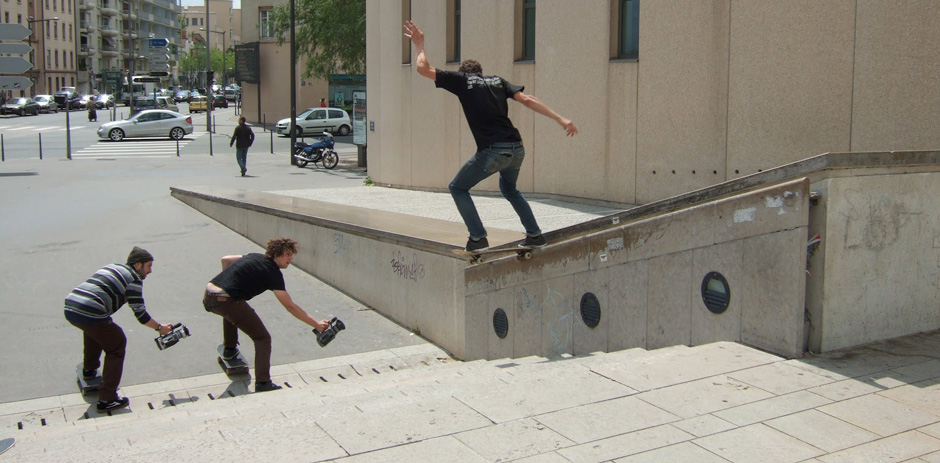
Seth shadowing Matt Winterberg for VX audio capture in lyon while Jon Allie tailslides. Below left: The Garret Hill sequence Seth shot on Sam Ashley’s camera
During your time there did you end up behind the lens at all. Did anything you filmed or shot end up in videos or magazines?
Definitely. When we went to Lyon we had two VX1000 cameras. The microphone broke on one of them. So basically I had to follow film Matt [Winterberg] the filmer holding the VX with the mic that worked. I’ve got some photos of Jon Allie skating the big Geoff Rowley ledge in Lyon, the down-flat one. I had to capture all the audio.
 When we went to Paris with some of the Zero dudes I knew Garrett Hill could kickflip 50-50 the Dome ledge. When we were in Lyon he flip 50’d that Geoff Rowley ledge so I knew he could do it. I orchestrated this trip to Paris because I knew he could do that trick and no-one had done it before. When we got there it was a bit wet so myself and Tony who worked for the distributor got some towels and started drying it so he had no excuse. He basically did the trick in about fifteen minutes.
When we went to Paris with some of the Zero dudes I knew Garrett Hill could kickflip 50-50 the Dome ledge. When we were in Lyon he flip 50’d that Geoff Rowley ledge so I knew he could do it. I orchestrated this trip to Paris because I knew he could do that trick and no-one had done it before. When we got there it was a bit wet so myself and Tony who worked for the distributor got some towels and started drying it so he had no excuse. He basically did the trick in about fifteen minutes.
Sam Ashley was shooting photos of it but he wanted to get a still and a sequence. I ended up shooting the sequence on Sam’s camera while he shot the still, and Matt filmed it. I think the sequence ran as an ad and the still was on the cover of the catalogue for that year.
Some good team manager fodder there. Calling the spot. Knowing who you think can skate it, and what trick they can do. Making the trip happen. Shooting the sequence.
Yeah it worked out. I knew Garret could kickflip 50-50 the Dome. I called Jamie that night to tell him he had done it and he was psyched. It’s the classic “ I love it when a plan comes together” A-Team thing, it did that time and it was good.
You would visit Black Box headquarters regularly too.
I went out to San Diego about twice a year to visit those guys and I became really good friends with a lot of the staff there. Obviously [John] Rattray used to ride for Zero too. I would go and stay in this little town called Encinitas with my friend John McGuire. John and my other friend David McSween are two of the best people I have met in my whole life. I would hang out with John, David, and Rattray the entire time I was over there. I’d go skating with them, swimming in pools, and living it up basically. I would hang out with Jamie Thomas and the other riders loads too. I would skate the Black Box park which is gnarly but really fun.
My job was working with Jamie to figure out how the European team was going to work with the Americans. There was a lot of talk about Black Box Europe starting as a business. So there would have been a European hub where my role would have probably gone on to be based. His business was growing so quickly then, every year I would go and there would be more people working there, the warehouse would be bigger, more skaters, more cars in the parking lot. It was mental. He was awarded Entrepreneur of the year in San Diego in 2006. What he managed to create was amazing, just through hard work, dedication, and belief in what he could do.
“the whole vibe of Black Box was 100% skateboarding and I was all about that. I was proud to work for them”
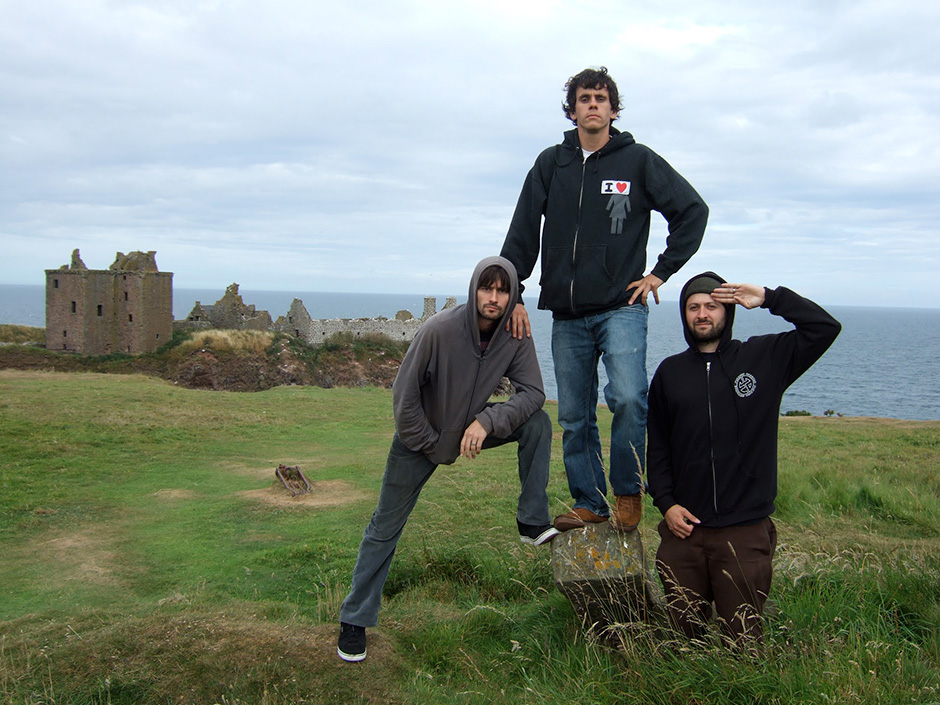
Zero Skateboards in Scotland in 2006. Seth with John Rattray and Rick McCrank. PH: Joe Brook
Everyone at Black Box loved skateboarding. The whole vibe of Black Box was 100% skateboarding and I was all about that. I was proud to work for them. Jamie built an amazing business that was thriving. It was doing really well until the financial crash when it went under.
After Blackbox ended it took a moment but then the Supreme shop opened and you became assistant manager. How did that come about?
The recession came like a wave over everything and the business was taken out by the wave of the financial crisis. My salary got cut, then it was cut again. Jamie knew we couldn’t continue like that and shortly afterwards the doors closed. I was out of work again and just after that my son was born. By default I became a stay at home dad for Riley, I did that from when he was born until he was about two or three.
Then I heard Supreme were going to be opening a shop and I got [Jason] Dill to put in a word for me with the New York dudes. Dan ‘Jagger’ Ball became the manager and brought me in as one of the assistant managers. I was there for two or three years.
Supreme London opened in 2011. How did you feel walking back into a retail environment? It’s rad looking back at that first SUMO photo and you’re wearing a sweater.
Yeah, I was wearing one back then. I have always respected what Supreme have done from the start.
“I have always respected what Supreme have done from the start”
I was fully into the opportunity of working for that brand. I think in my mind I thought it was going to be like working in Slam and I quickly found out that it wasn’t. It’s a serious business, far from working in a skate shop reading magazines. It was proper hard graft.
A well-oiled machine.
Exactly, well-oiled and agile. A razor sharp business with amazing employees and great products people really want. The beginning was a big gear change for me. I’d been pushing a buggy around a park for two years and then straight into a full-on retail experience. I did my best, tried my hardest, and learned a lot in a short period of time. We had some good times in there during that period.
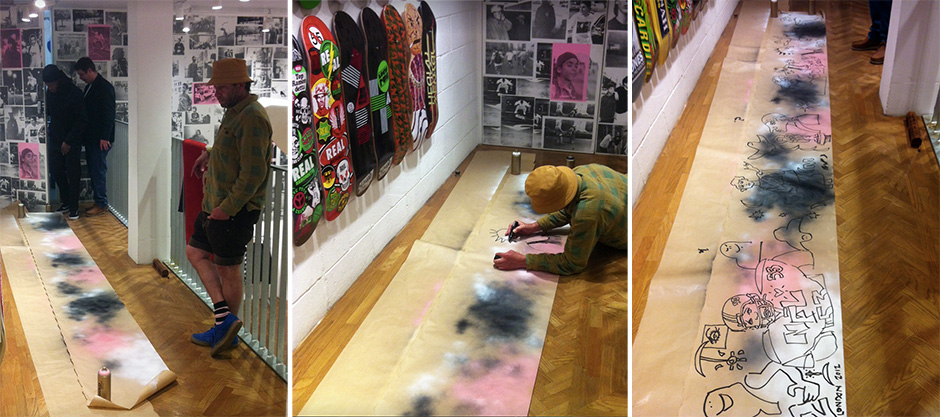
Mark Gonzales using the Supreme London shop as his studio
It’s amazing to have been there from it first opening and watching the shop evolve.
It was good being there from the start, but it was a lot of work on a weekly basis. Eventually as time went on we struggled as a family. Riley was still very little and my wife’s job involved a lot of pressure. She has always had amazing jobs that require a lot of time. At this point I’d just like to acknowledge how hard my wife has worked for the success of our little family. She’s so motivated and seeing her own business blossom from her pure hard graft is next level. Bev, Jamie Thomas, and James Jebbia have a lot in common! She got on well with both of them, understandably.
So we arrived at a point where we were both working demanding jobs and becoming ships that pass in the night. Riley was at nursery, and had to be with a nanny sometimes. It just wasn’t working, something had to give and that was my job. So I decided to leave Supreme. I spoke to James Jebbia, Kyle Demers, and Jagger about it and they were understanding. They appreciated my position as fathers themselves. They were really good about it, James even gave me some links for consulting work I could do once I had left the brand so it ended in a good way.
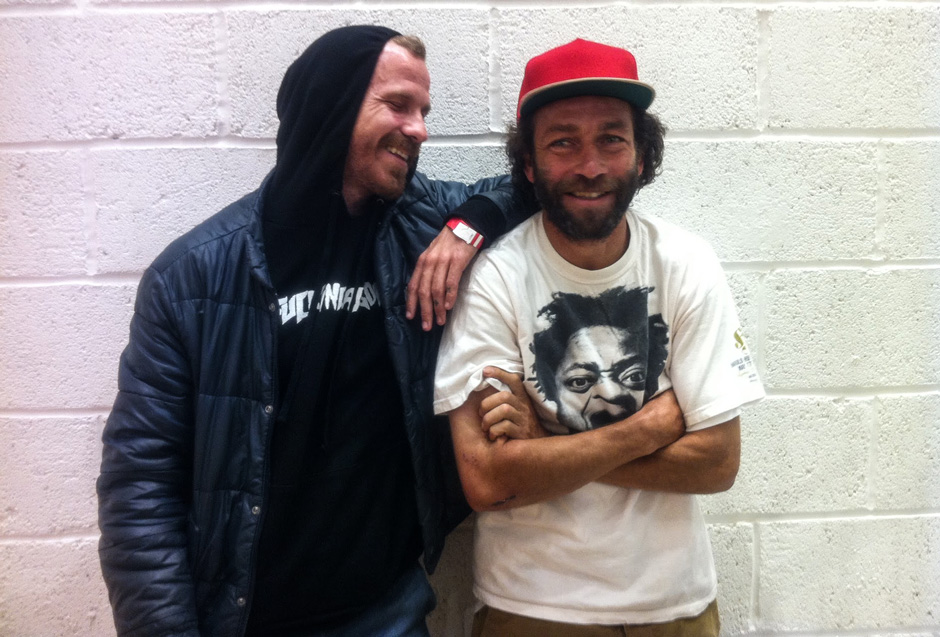
Jason Dill and Mark Gonzales in the Supreme London shop on opening day. PH: Seth Curtis
What skills did you hone during that period of the shop establishing itself in Soho?
Ask any of the other lads at the shop, I’ve still got a lot to learn about merchandising but in a broader sense I have learned more about that. I did a lot of money stuff when I was there the first time around, managing the banking. Really I learned a lot about hard work. I think a lot of the jobs I did prior to working for them were on my own time and a lot less intense. Working for a business that is very top down is different. You learn how the business works, then you get on board and do it. Working hard and getting paid well for the effort you put in.
Can you give us a funny Supreme anecdote?
 We had Drake come in one day. He had an entourage and two security guards. These two security guards were the biggest humans I have ever seen in my life. One went downstairs with him while he went to look at clothes and the other one stayed upstairs. He came over to me and asked to use the bathroom. I said he could and took him over to the door to the stockroom. The guy had to bend down, and walk sideways through the door, hahaha. He was that big, this is a regular door we’re talking about.
We had Drake come in one day. He had an entourage and two security guards. These two security guards were the biggest humans I have ever seen in my life. One went downstairs with him while he went to look at clothes and the other one stayed upstairs. He came over to me and asked to use the bathroom. I said he could and took him over to the door to the stockroom. The guy had to bend down, and walk sideways through the door, hahaha. He was that big, this is a regular door we’re talking about.
So after your first stint at Supreme you started a consultancy gig and worked with different brands. Is that something you enjoyed?
When I left Supreme Riley started school. We had worked out that it would have cost half of my salary to pay for someone to take him to and from school so consultancy was a good way to be able to take him myself and still have work to do. I did some consulting work on a project for Selfridges thanks to Supreme. Then I began doing a lot of stuff with Vans. They had me judging a load of skateboard events for them so I was travelling a lot doing that. I was judging the Downtown Showdowns they were doing. It was really fun, travelling on their dime, getting to skate and being involved. I really enjoyed judging and hope they valued my input.
I went to a really good one in Amsterdam where we were partnered up with another person. There were eight of us and I was partnered with John Cardiel. We had to sit together and discuss how many points to give a rider rather than it being an individual decision. I hadn’t met John before and I hung out with him for four days at this Vans event. He was great. I have always struggled meeting my heroes but he didn’t disappoint. So getting to hang out with him for a weekend and judge a skateboard contest, who is going to think that’s not good?
I also helped ARIES do a pop-up store in Covent Garden at one point and other bits of stuff that would come up. Some gigs through friends, some through my wife’s work. As time progressed the momentum I had at the beginning started to dissipate a little bit. I found it hard to find new avenues to explore. As Riley got older I was questioning where I was going and what I was doing. There was a point where I was discussing doing a bigger role with Vans full-time. I was excited about doing that but unfortunately they ended up hiring someone internally.
When I interviewed Dave Atkinson he mentioned that he thought his key skill was a tireless interest in skateboarding. When I think of you, that is an accurate description too, decades of knowledge.
Absolutely, to a fault, I’m still just a fan of it. That’s a nice way of Dave putting it and I would definitely put myself in that camp. I have a tireless fascination with skateboarding and what’s going on with it. I also try and keep up with what’s going on with the industry because I find that stuff interesting too. I feel my consultancy stuff hinged more on the fact that I had worked in Supreme. That was the calling card that led to many of those jobs more than my knowledge.
I feel that untapped knowledge should be harnessed for the greater good. I always call you up to double-check things I think I’m sure of.
Lots of other people do too and I love that. There’s something about skateboarding that just stays in there and a lot of other things don’t.
You spent some time helping Dan Adams over at the RaD archives too.
Yeah that was during that same period. It was during the initial phase of trying to turn the RaD archives into a book. I remember chatting with Dan about it and he wanted a bit of help going through some of the stuff that he had there. He knew that my knowledge of that period of time in skating was sound enough to go through it. I would go up there once every couple of weeks to hang out with him. He would be doing design work and I would be going through all of the drawers and folders and just fanning out over the amazing treasure trove of images that make up that archive. It is absolutely wild what they have there. You could make a book out of one folder.
“You could post an Instagram post every day for the next five or six years and 70% of it hasn’t even been seen!”
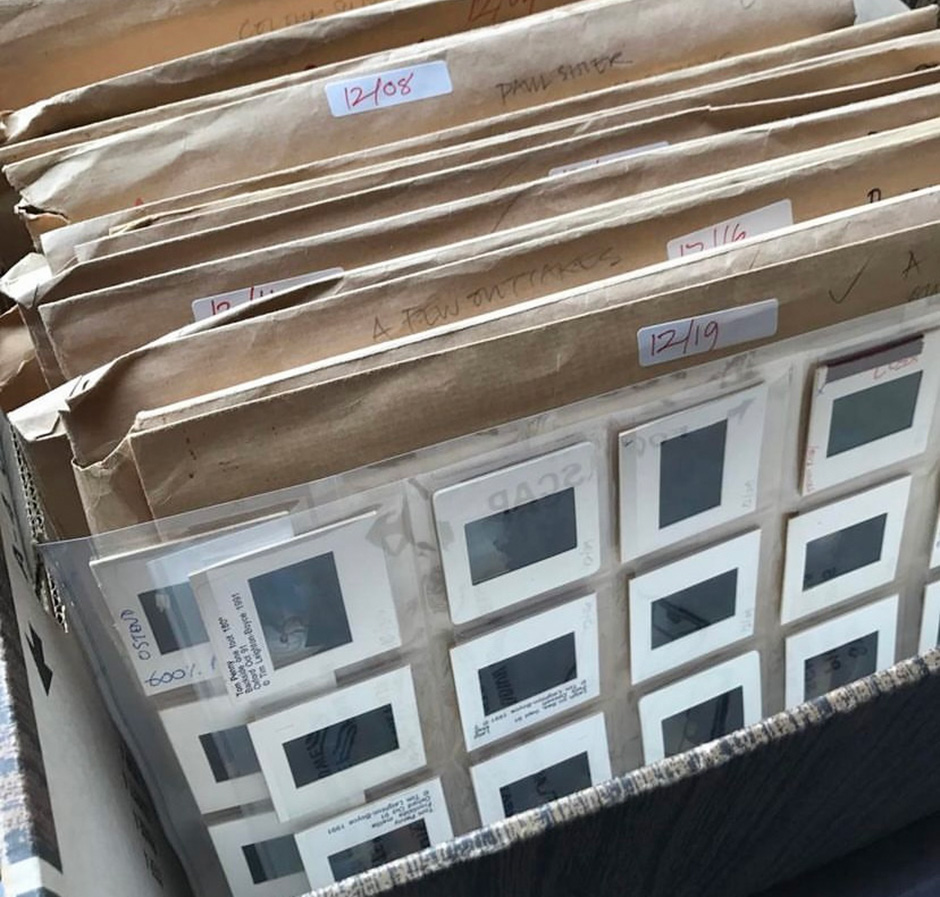
Scratching the surface. One of many folders Seth helped catalogue for the RaD Archives
There’s stuff you have seen in magazines, your favourite photo in RaD. But for every photo that’s in there, there are another ten or fifteen. Maybe a different skater at the same spot, other angles, outtakes. There is so much amazing stuffing there. It’s criminal that original Kickstarter didn’t come to any kind of fruition. This isn’t a few photos here and there, so doing that archive justice is really difficult. You could post an Instagram post every day for the next five or six years and 70% of it hasn’t even been seen! It’s not just contributors from the UK either, there are US photographers too. Helping Dan over there was exciting.
So you had some time out and then returned to working at the Supreme shop. How is that the second time around?
I was visiting LA when I got a message asking if I would consider coming back. Someone was leaving and they offered me a part-time position at the shop again. It felt like the right thing to do and I have been back there for about three years now. I work there three or four days a week. It’s good, the group working at the shop are really cool. The crew spans different ages and I’m definitely one of the oldest, of which I’m reminded of daily!.
The shop sponsors people like Atlantic Johnson, Twiggy, Kevey and Myles Shankie who come in daily, I love that aspect, those guys rip and are amazing dudes. It’s kind of gone back full circle to the Slam stuff. Central London is missing a hardcore skate shop and our shop has kind of become that. Many of the better Southbank skaters skate for the shop. It’s nice to have that clubhouse feel again.
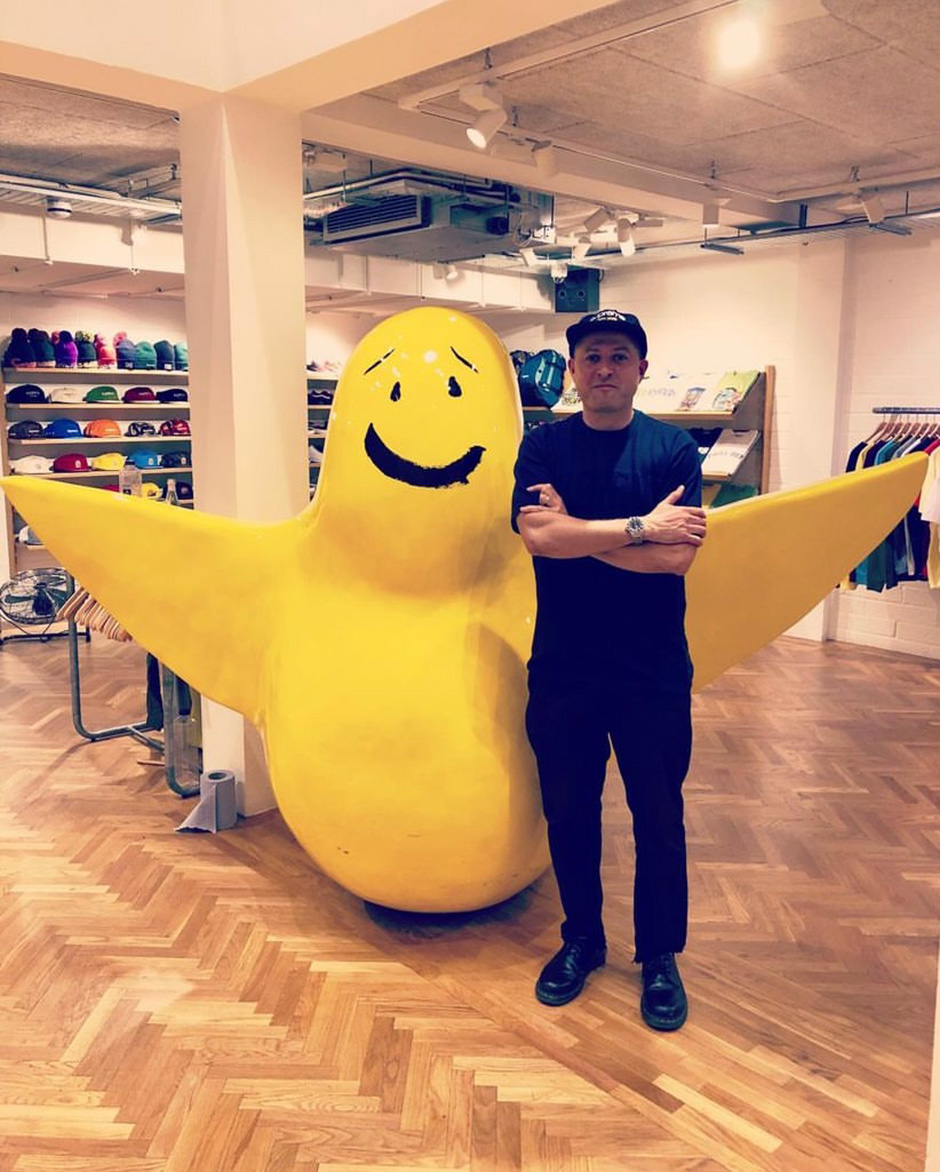
Seth’s first day back at Supreme after a brief hiatus. Below left: high-octane manual on a car park mission with Tom Richardson and Toddy
“Many of the better Southbank skaters skate for the shop. It’s nice to have that clubhouse feel again”
One of the best things about working at Slam were the musical influences we picked up from Rough Trade. Every single person who works at Supreme is hugely into music. Their music knowledge blows mine out the water so I’m learning all the time about old music, new music, and many different genres. I really enjoy that aspect of working there too.
Another question I asked Dave is how do you maintain the passion for the act of skateboarding. It’s common for people fall out of love with it when they are actively involved with it on a daily basis.
 When I was younger working at Slam, being in and around skateboarding all day every day, and talking about it after work, and going and doing it after work was fine. It was just what we did. I remember towards the tail end of working at Slam though finding it harder to be motivated to go skating after work having talked about it all day.
When I was younger working at Slam, being in and around skateboarding all day every day, and talking about it after work, and going and doing it after work was fine. It was just what we did. I remember towards the tail end of working at Slam though finding it harder to be motivated to go skating after work having talked about it all day.
I remember having a realisation at 28 though. I read an interview with Chet Childress. He was saying that throughout the 90s he was told by the brands he was riding for that he should do this or do that. They were suggesting he skated in different ways, asking him to change up what he did basically. He said he got to a point where he had had enough of people telling him how to skate.
Then he said he started skating how he wanted and was building a bridge and getting over it, accepting he couldn’t do switch 360 flips or whatever. When he started skating how he wanted he said he was happier. At the same time his sponsorship situation and the opportunities he had within skateboarding followed suit.
I always remember that, it’s about being happy with the way you skate and the stuff you can do. I’ve just tried to follow that.
Play the hits.
Exactly, I just try and do the shit I can do. I can do wallies, and wallrides, and skate quarter pipes a little bit. I can tailslide some crap, that’s all I can do really but I’ve maintained it and still skate as much as I can. I’m going through a phase now where I can’t skate because my back is bad and I feel very stagnant and still because of that. I need to be moving quickly and rolling. As soon as I get on my skateboard I’m just happier. There’s a hill near my house on the way to the tube station. I put my board down, ollie off the kerb, bomb this hill, do one powerslide, turn around, go over some blind bumps, do a firecracker off the kerb, skate across the street, and ollie up the other kerb. Then I’m at the tube station. By the time I get to the tube station I always feel so much better having done just that. Then I always remember why I’m into skateboarding.
What do you think is exciting about skateboarding at this exact moment in time?
I still have skaters that I watch out for who rip. There’s a lesser number of them but I’m still excited to see certain people doing stuff. I think the way that skateboarding has diversified is amazing too. It’s almost like it mirrors music. For instance you have Heavy Metal as a title, but an offshoot of that is Black Metal, and then you have Egyptian Black Metal, and Thrash Metal. It’s like a tree, a family tree of subgenres. You have that now in skateboarding and all these different ways that people see it. From Nyjah Huston on one end to Andrew Allen on the other, and everything in between. There are all kinds of different salaries in the middle of that too. Skateboarding means loads and loads of different things to loads of different people.
I was talking to Bod Boyle the other day, and this kind of goes back to speaking about Steve Douglas. Those two guys are so passionate about skateboarding and know so much about it, and the industry. Every time Bod is back in England he calls me and we go for a pint. He is always excited about different things. He was telling me something that was really obvious but that I had never considered.
He was saying that skateboarding now has never before been for so many people. It’s for people who are four, for people who are 12, people who are 22, people who are 32, all the way up to people who are 62, and beyond. It can be a different thing for all of those different age groups. It seems self explanatory but I never thought of it in that way. Skateboarding has been around for so long now. In the grand scheme of things it is a new activity but it’s so far-reaching. I thought that was a good way of thinking about it. As Bod said, it means all of this stuff, to so many more different people of different age groups. It’s how you find it.
“Be passionate about it, that is the number one thing”

“I would pick a discipline and try and branch out from it”
What advice do you have for someone who wants to be involved in the skateboard industry in some way?
Be passionate about it, that is the number one thing. I would pick a discipline and try and branch out from it. If it’s photography you are into, learn how to film too. Learn how to make amazing Instagram edits. Make sure you are there at ground level with your local shop and good skaters. I really feel now that with the roles I used to do, I would be doing just one of those things. Now, it’s more of a one-man band thing.
Take Rhino for instance who works for Independent. He is their brand manager, their photographer, their filmer, and their team manager. He does their Instagram, all of their social. That’s what that guy does. When I was working at Black Box, that job list would have been handled by five people. It’s not worse, or better, it’s just a different time. My advice would be to learn a broad breadth of skills and be passionate about it.
Last words…
Skateboarding is how you find it. Find a part of it you are psyched on and just run with it. Big up Rum Coke Tom, and Toddy.
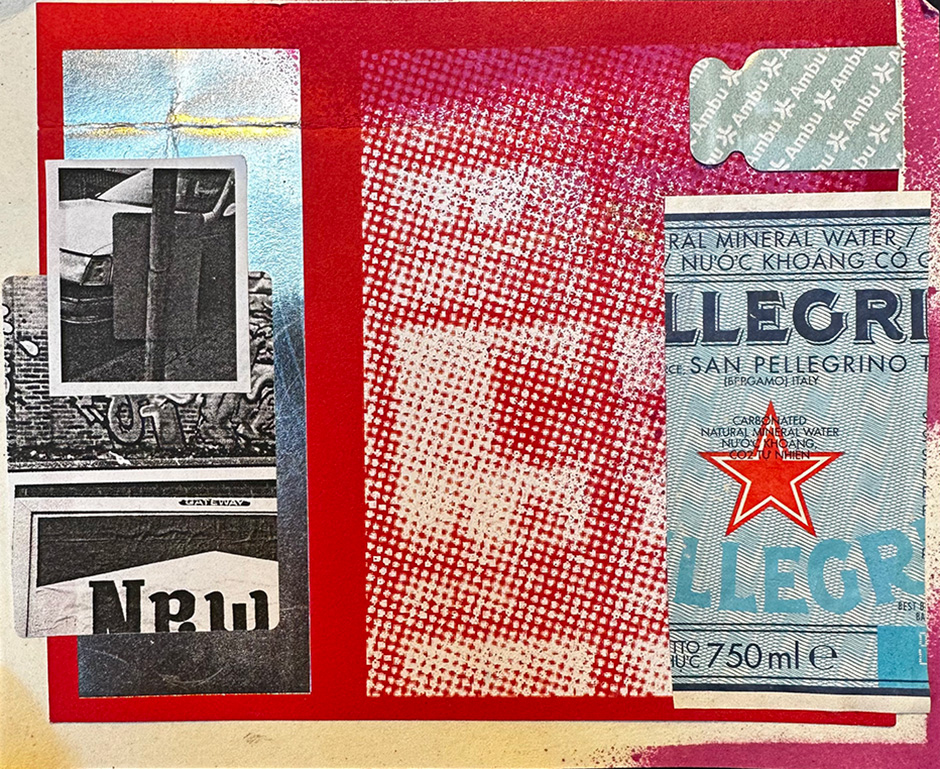
Seth left art college at the start of the interview but has never stopped making art. Recent collage on card
We want to thank Seth Curtis for taking time out of his busy life to speak to us about his history in the skateboard industry, and trawling his photo archives.
Thanks to Neil Macdonald (Science Vs Life) for mag scans. Thanks also to Wig Worland, Andy Simmons, Max Creasy, and Mark Baines for sending photos.
Previous interviews like this: Industry: Vans With David Atkinson

